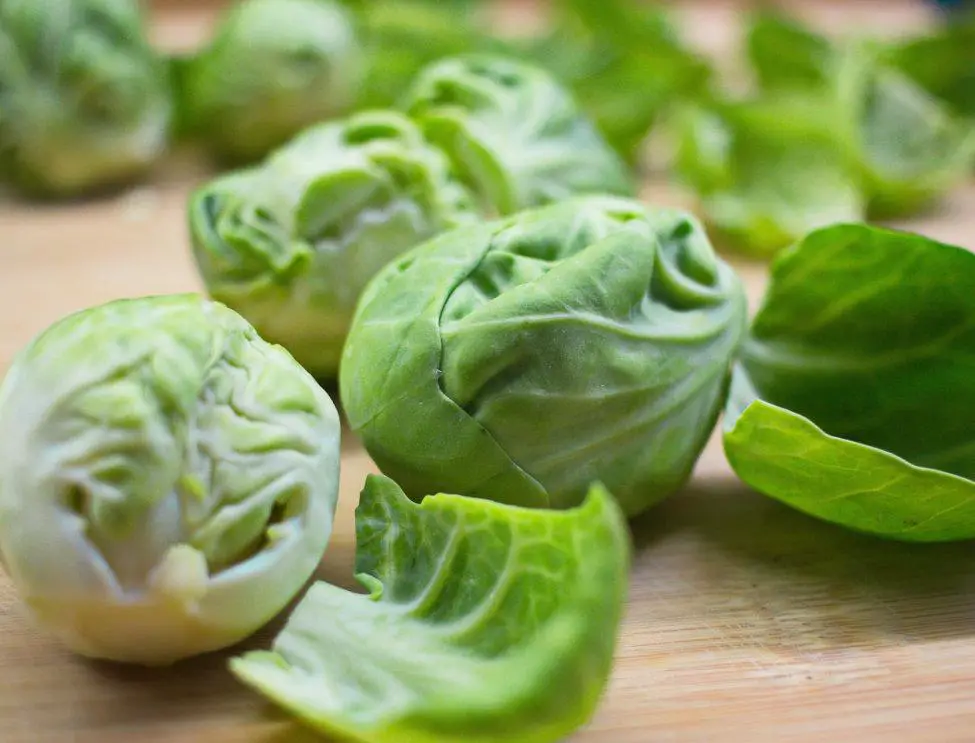If you’re a fan of these mini cabbages and find yourself short on garden space, fear not! Brussels sprouts can thrive in containers, bringing the joy of homegrown goodness to even the smallest of balconies or patios. In this article, we’ll take you through the steps, from understanding their basic needs to harvesting the perfect sprouts for your dinner table.
Basic Needs: Setting the Stage for Brussels Sprout Success
Brussels sprouts, though compact, have specific requirements to ensure a successful harvest. Here’s what you need to consider:
- Container Selection: Choose a large container with a minimum depth of 45cm to accommodate the sprouts’ extensive root system. Opt for one with drainage holes to prevent waterlogging.
- Quality Soil: Brussels sprouts prefer well-draining, nutrient-rich soil. Use a potting mix with added compost to provide the necessary nutrients for healthy growth.
- Sunlight: Place your containers in a location that receives at least 6 hours of direct sunlight per day. Brussels sprouts thrive in full sun, so ensure they soak up those rays.
- Variety Selection: Opt for a container-friendly Brussels sprouts variety, such as ‘Dynamo’ or ‘Crispus.’ These varieties are known for their compact growth, making them ideal for containers.
Growing Techniques: Nurturing Your Brussels Sprout Babies
Now that you’ve set the stage, it’s time to get your Brussels sprouts started:
- Planting Time: Brussels sprouts are cool-season crops. Start them indoors 12-16 weeks before your expected transplanting date or directly sow seeds in early spring or late summer.
- Transplanting: Once your seedlings are about 15cm tall, transplant them into your containers, spacing them at least 40cm apart. This ensures they have enough room to spread and receive adequate airflow.
- Watering: Keep the soil consistently moist. Brussels sprouts require regular watering to prevent the soil from drying out, especially during hot weather.
- Feeding: Fertilize your Brussels sprouts every 3-4 weeks with a balanced, all-purpose fertilizer. Consider adding a dose of nitrogen-rich fertilizer to promote robust leafy growth.
Problem Solving: Tackling Common Brussels Sprout Issues
Growing Brussels sprouts in containers comes with its challenges. Here’s how to troubleshoot common issues:
- Pests: Keep an eye out for cabbage worms, aphids, and caterpillars. Handpick pests or use neem oil to keep them at bay. Companion planting with aromatic herbs like mint or dill can also help deter pests.
- Yellowing Leaves: Yellowing leaves may indicate a nutrient deficiency, typically nitrogen. Feed your Brussels sprouts with a nitrogen-rich fertilizer to address this issue.
- Overcrowding: If your sprouts are too close together, they may compete for nutrients and sunlight. Thin them out if needed to allow proper spacing.
Harvesting and Storage: Reaping the Mini Cabbage Rewards
As your Brussels sprouts mature, it’s time to enjoy the fruits of your labour:
- Harvest Time: Brussels sprouts mature from the bottom up. Harvest from the lower part of the stalk upward, picking sprouts when they reach about 3-5cm in diameter. Use a sharp knife to cut the sprouts off the stalk.
- Continued Harvest: Continue harvesting as the sprouts grow, ensuring they remain firm and vibrant green. Late-season frost can actually improve their flavour, so don’t be in a hurry to harvest them all at once.
- Storage: Store harvested Brussels sprouts in the refrigerator for up to a week. For longer storage, blanch and freeze them. Remember, the fresher, the better!
Tips: Enhancing Your Brussels Sprout Container Garden
Maximize your Brussels sprout-growing success with these tips:
- Supporting Stems: Brussels sprouts can grow tall and may benefit from staking or support to prevent them from toppling over in windy conditions.
- Mulching: Apply a layer of organic mulch, such as straw or shredded leaves, around your Brussels sprouts to conserve moisture, suppress weeds, and regulate soil temperature.
- Crop Rotation: If growing Brussels sprouts in the same containers each season, practice crop rotation to prevent soil-borne diseases.
Growing Brussels sprouts in containers is a delightful way to bring this mini cabbage to your urban garden. From choosing the right container to troubleshooting common issues and savouring the harvest, the journey is filled with joy and satisfaction. So, grab your containers, plant those seeds, and watch as your Brussels sprouts thrive in a space-saving, delicious display.

